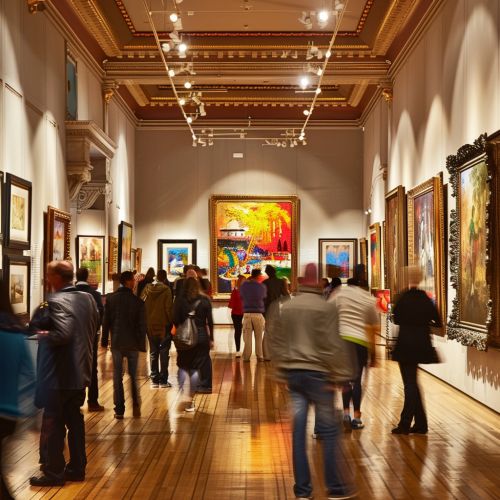Art and Perception
Overview
Art and perception are intrinsically linked, forming a complex relationship that has been studied across various disciplines including psychology, philosophy, and neuroscience. The way we perceive art is influenced by a multitude of factors, ranging from our individual sensory experiences to our cultural and societal backgrounds. This article will delve into the intricate relationship between art and perception, exploring the ways in which they interact and influence each other.


Art and the Senses
Art engages our senses in unique ways, often evoking strong emotional responses. The sensory perception of art involves complex cognitive processes, where the brain interprets the sensory information it receives to form an understanding of the artwork. This process is influenced by our individual sensory experiences and abilities, which can greatly affect our perception of art.
Visual Perception
Visual perception plays a crucial role in our understanding and appreciation of art. The brain's visual system processes the visual elements of an artwork, such as color, shape, and composition, to form a coherent interpretation. This process is influenced by various factors, including our visual acuity, color vision, and spatial awareness. For instance, individuals with color blindness may perceive an artwork differently due to their altered color vision.
Auditory Perception
In the realm of auditory arts such as music and sound installations, auditory perception is key. Our ability to perceive pitch, rhythm, and timbre influences our understanding and appreciation of these art forms. The study of psychoacoustics delves into these perceptual phenomena, exploring how we perceive sound and how this influences our experiences of auditory art.
Tactile Perception
Tactile perception, though less commonly engaged in traditional art forms, plays a significant role in certain mediums such as sculpture and installation art. The sense of touch can evoke strong emotional responses, adding a unique dimension to the art experience. Tactile art forms challenge the traditional notion of art as a purely visual experience, highlighting the importance of multi-sensory engagement in art perception.
Cognitive Processes in Art Perception
The perception of art is not solely a sensory experience, but also involves complex cognitive processes. Our brains interpret the sensory information they receive, drawing on our memories, knowledge, and experiences to form an understanding of the artwork.
Perception and Interpretation
The interpretation of art is a cognitive process that involves the brain making sense of the sensory information it receives. This process is influenced by our individual experiences, knowledge, and cultural backgrounds. For instance, an individual's understanding of an artwork's historical or cultural context can greatly influence their interpretation of it.
Perception and Emotion
Art has the power to evoke strong emotional responses. This emotional aspect of art perception is closely tied to our cognitive processes. The brain's emotional response to art is influenced by various factors, including the artwork's content, our personal experiences, and our cultural backgrounds. For instance, an artwork depicting a familiar scene may evoke a sense of nostalgia, while an abstract painting may evoke feelings of confusion or intrigue.
Perception and Memory
Our memories play a crucial role in our perception of art. The brain draws on our past experiences and knowledge to interpret the sensory information it receives. This process can evoke memories, influencing our emotional response to the artwork. For instance, an artwork depicting a childhood toy may evoke a sense of nostalgia, while a painting of a historical event may evoke memories of learning about it in school.
Cultural and Societal Influences on Art Perception
Our cultural and societal backgrounds greatly influence our perception of art. Cultural norms and values can shape our interpretations of artworks, influencing our emotional responses and our understanding of the artwork's meaning.
Cultural Context
The cultural context of an artwork can greatly influence our perception of it. Artworks often reflect the cultural norms and values of their time and place of creation, and understanding this context can enhance our appreciation of the artwork. For instance, a Renaissance painting may depict religious themes that reflect the societal values of the time, and understanding this context can enhance our interpretation of the painting.
Societal Norms and Values
Societal norms and values can also influence our perception of art. Artworks often challenge or reflect societal norms, and our understanding of these norms can influence our interpretation of the artwork. For instance, a contemporary artwork challenging gender norms may be perceived differently by individuals with differing views on gender roles.
